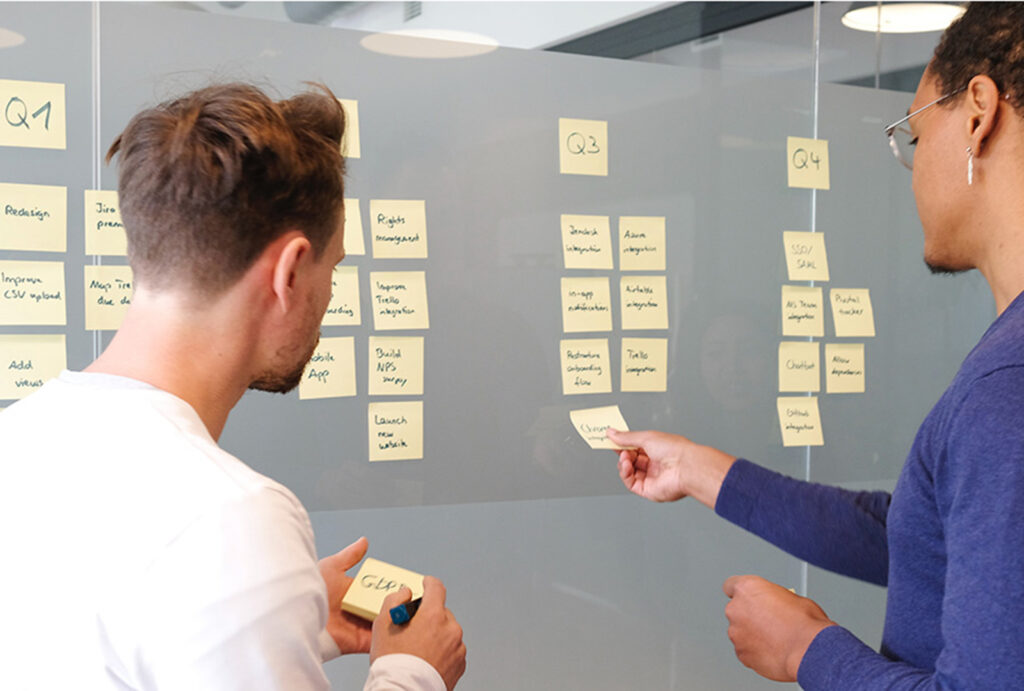In today’s fast-paced work environment, many professionals unknowingly sabotage their productivity by falling into common traps that hinder performance. Many feel trapped in a cycle of endless tasks, poor planning, and exhaustion, unaware that these mistakes erode daily efficiency. This article explores the most critical errors affecting work performance, offering actionable insights and strategies to overcome them. By addressing issues such as poor time management, neglecting breaks and self-care, over-commitment, and inadequate communication, you will learn to transform your workday into one that is both productive and fulfilling. Discover the transformative power of small changes that yield significant improvements in your professional life.

Understanding Common Work Pitfalls
In every profession, mistakes are inevitable. However, when these errors become habitual, they can severely limit productivity. Many professionals struggle with recurring issues—ranging from poor time management to neglecting self-care—that ultimately impact the quality of work. Recognizing these errors is the first step toward a more efficient work environment. Through self-assessment and honest feedback, employees can identify habits that hinder their ability to perform at their best.
In recent years, work and productivity have evolved drastically. Modern work environments demand a balance between responsibilities and personal well-being. This balance not only improves daily performance but also contributes to long-term career satisfaction and growth. Studies show that people who proactively manage these pitfalls report higher job satisfaction and lower stress levels. Understanding the root causes of these mistakes is crucial for anyone looking to optimize their workflow and avoid common errors.
This section lays the groundwork by exploring why these pitfalls persist and how they can be addressed effectively. We will examine the errors themselves as well as underlying factors such as organizational culture and personal habits. With the right approach, correcting these mistakes can open new doors to professional growth and achievement. As you read on, you will gain insights into specific errors that sabotage your work performance and learn actionable strategies to overcome them.
1. Poor Time Management: The Silent Productivity Killer
Time management is the backbone of productivity. When professionals fail to plan their time effectively, the consequences are detrimental. Days filled with interruptions, procrastination, and a lack of scheduling leave little room for critical tasks. Effective time management isn’t about working longer hours—it’s about making the most of every minute. In today’s competitive work environment, mastering time management can mean the difference between meeting deadlines and falling behind.
Studies have repeatedly shown that poor time management is one of the leading causes of diminished work performance. When employees cannot structure their day properly, they often feel overwhelmed and unable to complete tasks on time. The constant pressure of a ticking clock breeds stress, which further reduces efficiency. In remote work settings, these challenges are even more pronounced, making it easy for priorities to slip. Prioritization and scheduling are essential skills for converting chaotic workdays into organized periods of achievement.

This section offers practical strategies to tackle poor time management. Consider breaking tasks into manageable segments and using productivity tools like digital calendars and time-tracking software. For example, experts recommend the Pomodoro Technique, which divides work into focused intervals interspersed with short breaks. Establishing structured routines and setting clear objectives can vastly improve work performance and mitigate the negative effects of improper time allocation.
The Impact of Distractions
Distractions are a major reason why even well-planned schedules can fall apart. Interruptions from emails, notifications, and even casual conversations can derail focus. Learning to manage these distractions by setting specific times for checking communications can greatly enhance concentration.
Creating a dedicated workspace and establishing boundaries with colleagues are practical measures that foster a distraction-free zone. Over time, minimizing interruptions helps maintain a high level of focus throughout the day.
Utilizing Time Tracking Tools
Modern technology offers an array of tools to help track your time effectively. These tools provide insight into how your day is structured and highlight areas that need improvement. By monitoring daily activities, you can identify time sinks that drain your productivity.
Integrating these tracking solutions into your routine not only aids planning but also encourages accountability. With clear data on your daily activities, you can adjust and optimize your schedule for better results.
2. Neglecting Breaks and Self-Care: The Road to Burnout
In the race to complete tasks and meet deadlines, many professionals underestimate the importance of taking regular breaks. Scheduled pauses for rest and self-care are essential for maintaining focus and energy. Ignoring these needs can lead to burnout, severely affecting work quality. A balanced work routine intersperses periods of intense focus with restorative breaks. Overworking without adequate rest compromises both mental and physical well-being.
Experts agree that stepping away from work for short breaks improves overall productivity. Research shows that brief pauses can rejuvenate concentration and spark creativity. Simple practices—such as a quick walk, a meditation session, or even a five-minute breathing exercise—can have significant benefits. Regular breaks are a strong defense against the fatigue that comes with long hours. Moreover, maintaining self-care rituals can boost mood, reduce stress, and enhance overall engagement.

In this section, we explore practical ways to integrate breaks and self-care into your work schedule. Recognizing that rest is as important as work, we outline various techniques to prevent burnout and promote a healthier, more productive work style. Balancing activity with rest is not a luxury—it’s a necessity for long-term success. Whether through scheduled yoga sessions or dedicated time for mental relaxation, small self-care investments can lead to remarkable improvements.
Scheduling Rest Periods
One effective method to ensure you take regular breaks is to schedule them like any other important meeting. By doing so, you commit to making rest a non-negotiable part of your day.
Using digital calendars to block off time for breaks prevents work from encroaching on personal time, thereby maintaining a healthy work-life balance.
Incorporating Mindfulness Techniques
Mindfulness is a powerful tool for managing stress and sustaining focus. Simple mindfulness exercises—such as deep breathing or short meditation breaks—can significantly refresh your mind.
Practicing mindfulness consistently helps lower stress levels and improve mental clarity, which in turn leads to higher productivity.
3. Over-committing and Lack of Prioritization
In an effort to excel, many professionals take on too many commitments. Over-committing is a common mistake that leads to increased stress, reduced output, and ultimately poor results. When too many tasks are juggled simultaneously, it becomes difficult to maintain quality in any area. Focusing on a few high-impact tasks promotes deeper concentration and better outcomes. Recognizing that it is okay to say no is a key lesson in boosting work productivity.
Prioritization goes beyond simply making a to-do list—it involves strategically assessing tasks based on urgency and importance. Without clear priorities, your schedule can be overwhelmed by low-value activities that drain energy and time. Distinguishing between essential and non-essential tasks empowers you to allocate your resources wisely. Learning to prioritize effectively makes the difference between steady progress and a chaotic workday.

This section delves into the consequences of over-committing and offers structured methods for effective prioritization. By establishing clear personal and professional goals, you can develop a disciplined approach that minimizes distractions and builds long-term resilience. Tools such as task management apps and prioritization matrices provide systematic ways to evaluate and execute your responsibilities, ensuring your efforts align with your most critical objectives.
The Cost of Multitasking
Although multitasking is often seen as a sign of a busy professional, it can reduce focus and efficiency. Shifting between several tasks at once dilutes attention and can diminish the quality of work.
Embracing a single-task focus lets you concentrate deeply, which leads to better quality output and greater satisfaction with your completed projects.
Implementing Prioritization Frameworks
Frameworks like the Eisenhower Matrix help categorize tasks into urgent and important groups, making it easier to decide what to tackle first.
Such tools guide you in making informed decisions, ensuring that your time and energy are devoted to endeavors that yield the highest returns.
Ineffective Communication and Its Impact on Daily Performance
Effective communication is fundamental in today’s collaborative workplace. However, many professionals inadvertently undermine their performance when communication practices fall short. Whether it’s unclear instructions, failure to ask clarifying questions, or misinterpreting goals, the effects can include project delays, reduced morale, and breakdowns in team dynamics. Clear and concise communication not only enhances team cohesion but also ensures tasks are executed accurately.

The downsides of ineffective communication often go beyond simple misunderstandings. In an environment that thrives on constant interaction, even small miscommunications can lead to major issues. Professionals must strive to express their ideas clearly while verifying that their message is understood by others. This approach prevents repeat errors and fosters a culture of transparency and mutual respect. Investing in communication skills is as crucial as developing technical expertise in today’s competitive landscape.
In this final section, we explore practical strategies and tools to improve daily communication. From active listening techniques to structured feedback sessions, these practices help create an environment where everyone is aligned and informed. Whether you lead a team or work independently, effective communication is essential for achieving both personal and organizational success. Embracing these methods can transform not only your workflow but also your professional relationships.
Active Listening and Clarification
Active listening requires fully concentrating on the speaker rather than merely hearing the words. This practice prevents misunderstandings and validates contributions from team members.
Following up on conversations with summaries or requests for clarification ensures all parties share a clear understanding of the next steps.
Leveraging Collaborative Tools
Digital platforms such as Slack, Microsoft Teams, or Asana streamline communication by keeping everyone on the same page.
These tools provide real-time updates and centralized information sharing, minimizing miscommunications and maximizing transparency.
In conclusion, identifying and correcting these common work mistakes is essential for fostering a more productive and fulfilling work life. Whether it means improving time management, ensuring regular breaks, setting realistic priorities, or enhancing communication, every small change can lead to major improvements. Investing in your personal productivity is about working smarter, not just harder. By applying the strategies detailed in this article, you can overcome obstacles, boost your performance, and harness the full potential of your workday. Remember, the power to change lies in your hands, and every step forward is a victory against inefficiency.




